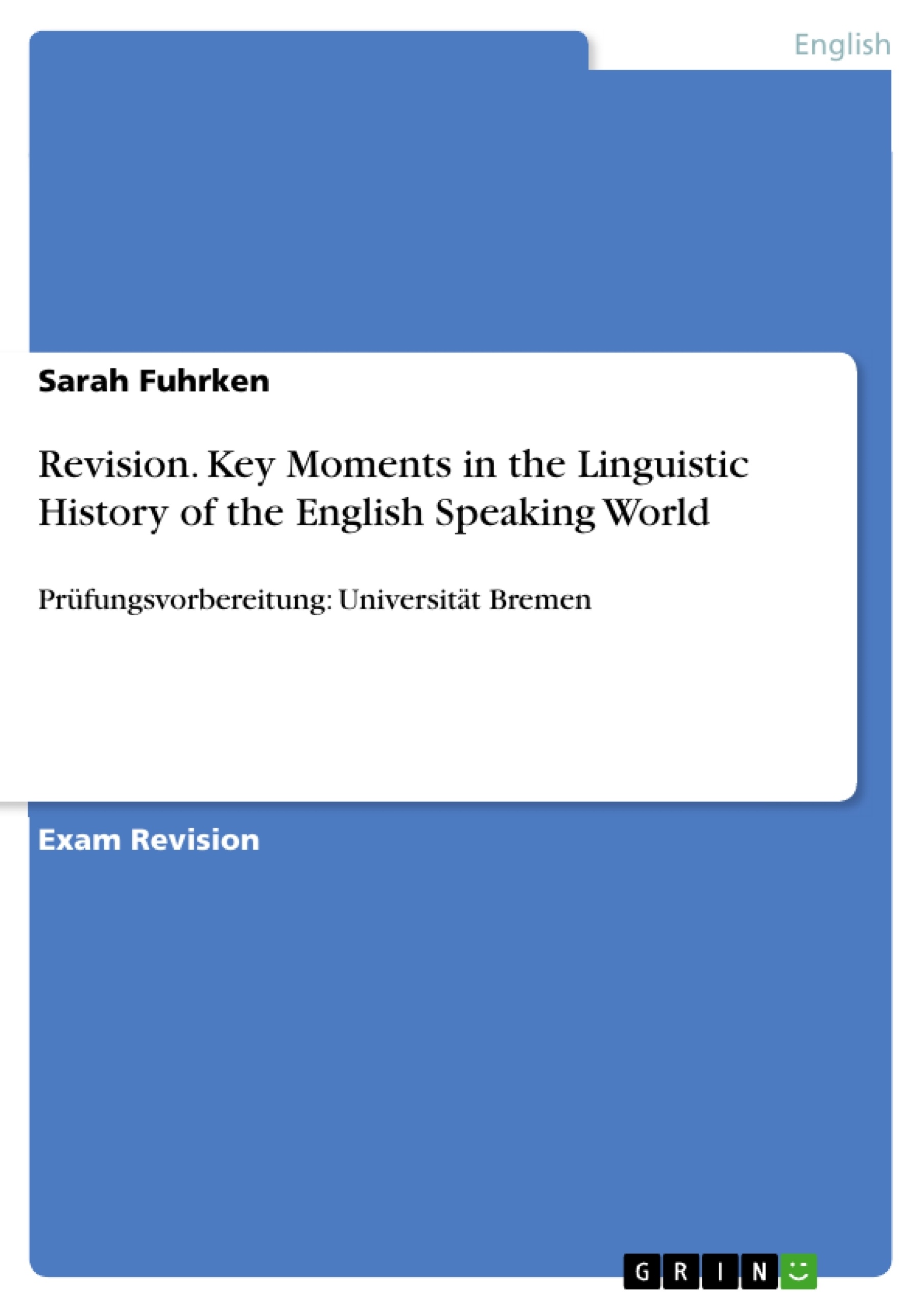This is my revision sheet for Key Moments in the Linguistic History of the English Speaking Wolrd.
It includes all aspects you need to know for the exam, nevertheless, you should also read the texts from McIntyre provided in StudIP (if you take part in this course).
Content:
Old Englisch (History and Language)
Middle English (History and Language)
Early Modern English (History and Language)
Translation of the Bible
Standardisation
Great Vowel Shift
Inner, outer and expanding circles
Pidgins and Creoles
North American English
Indian English
English in the Southern Hemisphere (Australian English, New Zealand English, Black South African English, White South African English)
Laguage and Educational Policies
- Quote paper
- Sarah Fuhrken (Author), 2014, Revision. Key Moments in the Linguistic History of the English Speaking World, Munich, GRIN Verlag, https://www.grin.com/document/279663



